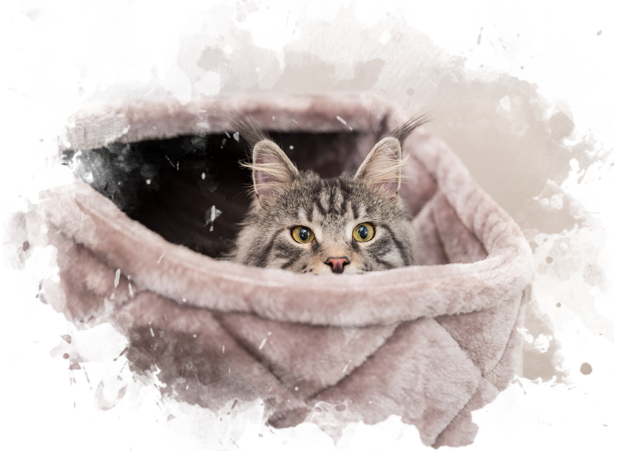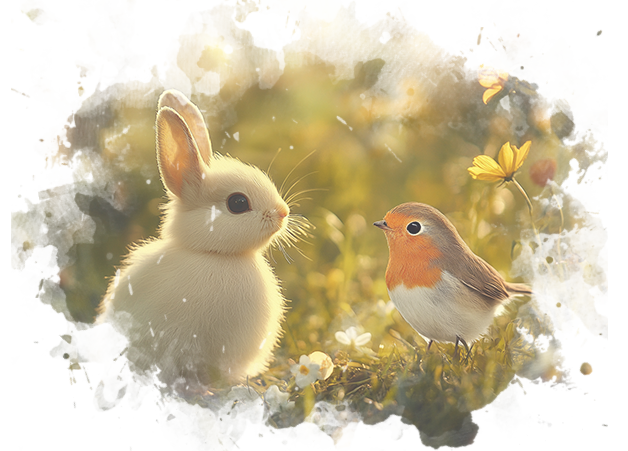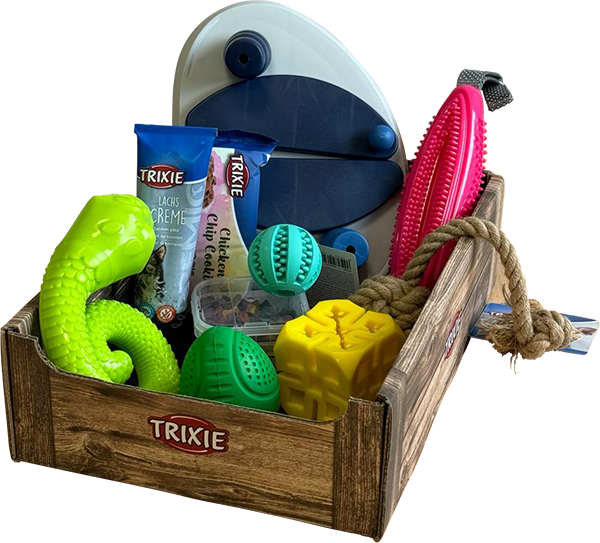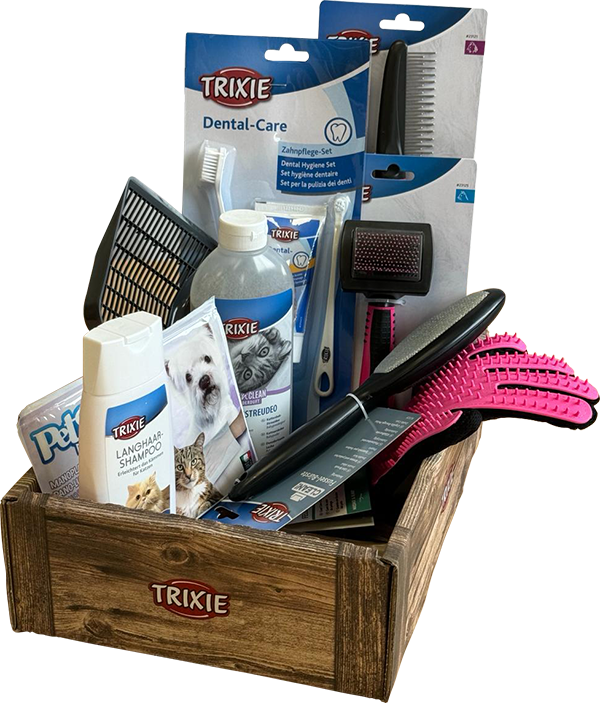Play is a major part of any pet's life. Create the habit of playing regularly with your pet. strengthens your connectionand can have many benefits for both you and your pet. You will be investing in their long-term health and wellbeing. To ensure the overall health of any pet it is essential to consider five main health issues found in play: nutritional, social, emotional, mental and physical.
Improving emotional and social bonding
Play is the best way to connect people and pets. Spending quality time together improves the emotional bond and helps build a stronger, more harmonious relationship. At the same time, it plays an important role in their self-esteem and integration into the herd of which he or she is a part, feeling useful in exercising his or her role.
Physical exercise
By finding the right activity, you'll bring your pet health when you keep them active and fit. Providing a habit of exercise is essential to your pet's physical health and overall wellbeing, helping them to maintain a healthy lifestyle. healthy weight and reduce the risk of health problems.
Promoting mental development
Stimulating games, such as interactive or quest games, help to maintain your pet's mind active and full of stimulation. Creating a habit where you have a time each day where you present them with challenges that end positively is especially important for more active pets.
Maintaining a balanced diet
Play is closely linked to rewards and positive education. At the same time, we must always bear in mind the balance in our pet's nutrition that the specialist has helped us to find. For this reason, it is essential to acquire play habits with natural and certified snacks that are compatible with the particular dietary requirements of each pet
Enhance desired behaviours by reducing stress and boredom.
Always with positive reinforcement, play provides an outlet for excess energy and helps reduce stress and boredom in your pet. Establish some guidelines and times to make it a habit and make it a habit for your pet. moments of play are key health spaces. They will be especially relevant for those pets that spend time alone at home during the day.
How to choose the right toy for my child?
How to choose the right toy for my dog?
There is the right toy and game for every type of dog. In order to find them, the first thing to consider is the shape, size and physical structure of our dog. In addition, there are also important factors to consider such as age, physical condition and, above all, the character of our friend. Playtime is the time when the dog can express himself and communicate through the toy with his guardian. So, adapt the toy to him and he will love it:
- Distinctive characteristics of the breed: If you know the specific breed of dog, you can look for distinguishing characteristics associated with that particular breed, with a clear tracking disposition, or intelligent and energetic.
- Body size and shape: Look at the dog's overall size and body shape: is it big and muscular, small and agile, long and lean?
- Type of muzzle: The muzzle can be short and rounded, long and pointed, broad and flat, etc. Observe the shape and length of your dog's muzzle.
HOME GAMES
Shared time during play not only strengthens the trusting relationship between dog and person, but also encourages communication. This makes it the best way to reinforce basic training commands and learn behavioural routines. Therefore, play is the best way of acquiring healthy habits through an educational and rewarding activity. for both parties.
Just as there is a toy for every type of dog, there is a game for every dog and every environment. Here are a few examples, starting with HOME GAMES and followed by those of external.
OUTDOOR GAMES
Before choosing a play habit for my Cat
The first thing we must integrate for the correct coexistence with cats is to understand that these felines establish the basis of their relationship on two intrinsically related aspects:
- Territory: The physical space that it internalises as its own and that provides it with the security of its survival.
- Cologne: The social members that form part of the territory, with whom it interacts as accepted through different means of communication. In order to create an adequate state of coexistence where the physical, health, emotional and social aspects of a cat can be taken care of (and also to generate good habits), we must create a stable and adequate environment taking into account these two key aspects. In this way we will first attend to certain basic needs for their emotional stability.
The cat in the HOME
Get to know your cat: its territory and colony

The cat systematically checks that everything is in order to maintain harmony. It is essential for its peace of mind that resources for survival are available at all times and in different parts of the territory. It must check that there are water and game (food) and thus avoids the feeling of scarcity in that territory and wants to look for another one. For this purpose, it is important to use several feeders with dry food and drinkers.
Another of the concerns that you will be reviewing and that we must satisfy is your instinct for refuge. To do this, our cat must find areas in its territory where it can soar, escape, scout, stalk and, basically, feel safe. In this way, he can rest properly without feeling threatened.
The cat reinforces its presence in the territory by means of different body markings, by making urinary marking or scratching of surfaces. Hygiene is very important in this respect, as it is one of the obvious ways of marking cats. It is therefore essential that every cat has its own litter box.
The cat will always be alert to any change in the territory. A new location of a piece of furniture or the arrival of a new member of the household means that the cat will check to make sure there is no threat. And this is where the members of the cat's household are so important, as a cat establishes a colony relationship with the members that are accepted into its territory.
Therefore, stability for a cat is acquired with the self-esteem provided by the security of the territory and the emotional bonds with the members of its colony. It is from this balance that we can introduce the habits that will bring it well-being and overall health.
You will see your cat happy when, after territorial recognition, he sits down, grooms himself, cleans himself. With his tail raised, he walks in front of us, and seeks physical contact. How to understand these territorial and colonial aspects of a cat to establish the security and bonding necessary to promote physical, nutritional, emotional and social health.
There are two fundamental habits that are especially important in caring for your cat's emotional state at the colony. The first is to establish a daily nursing bond between you and your cat, which will strengthen a mutual relationship. This gesture of offering liquid food, creams, soups, is one of the best habits you can establish as it will provide your cat with a maternal refuge unequalled by any living being.
The other habit would be to offer his daily wet food through a ritual where the detail of bringing his prepared food bowl with his favourite "game" is important. For the cat you will have the role of being the member of the colony that gets his game, which will make you important to him within the colony.
Let's play!
Choosing the right play habit for my Bird or Small Mammal
Far beyond weight control, play in our smaller pets plays a crucial role. It should be remembered that the mental development of most breeds of rabbits, psittacines and even guinea pigs or other small rodents is almost as advanced as that of some dogs. And so, as well as giving them the opportunity for exercise, mental stimuli are transcendental for their wellbeing and overall health.
The most direct and healthy way to cover this need in pets that live in cages or enclosures is through play. Remember that they live in much more confined areas than they would naturally, although this does not mean that their quality of life diminishes, but quite the opposite when they are properly cared for.
If we never bring positive changes to their cage or enclosure, little new stimuli are produced and this is unrealistic in a natural environment such as a forest or tree area. It is normal for the feeders in the cage to remain in the same place, the colours of the room (walls, decoration, etc.) to remain the same or the smells to remain similar. This is where play comes in and becomes a key element in keeping the pet active and engaging in desired behaviours.

Let's play!
The most important activity for all lovers of small pets is to enrich your environment on an ongoing basis.
Environmental enrichment thus becomes the key to the overall health of animals that spend most of their time in cages or enclosures. And within that enrichment, the habit of play may be the most important of all.
Of course, beforehand this environment must be perfectly chosen and adapted to the conditions and morphology of each pet. There is no point in providing a lot of play if a budgie does not have the right cage for its size and flight or if we put too many guinea pigs in the same enclosure.
Once we have decided on a home for our pet, we can then choose ae are going to play it every day. And the way is much simpler than it may seem. Sometimes it is enough to simply reposition the elements in the cage. This simple act will, for example, challenge a hamster to search for and find where its exercise wheel is every day, which will lead to medium and long-term health and well-being by satisfying its instinct to search through smell.

